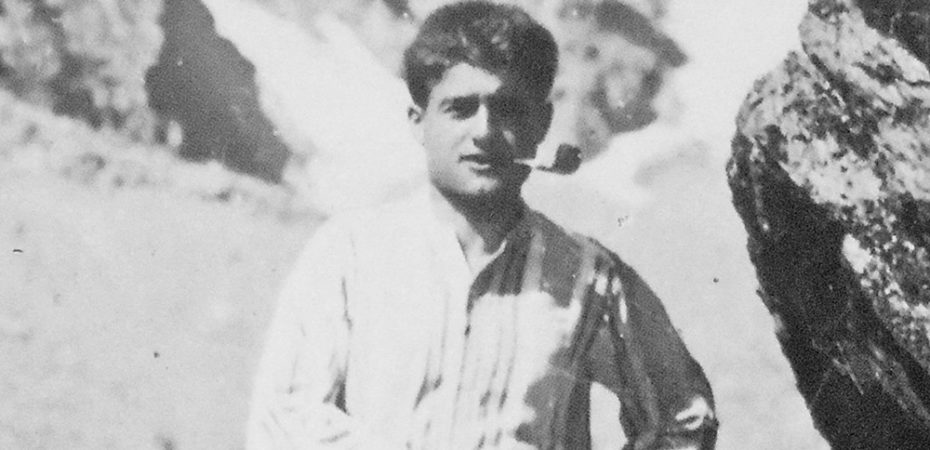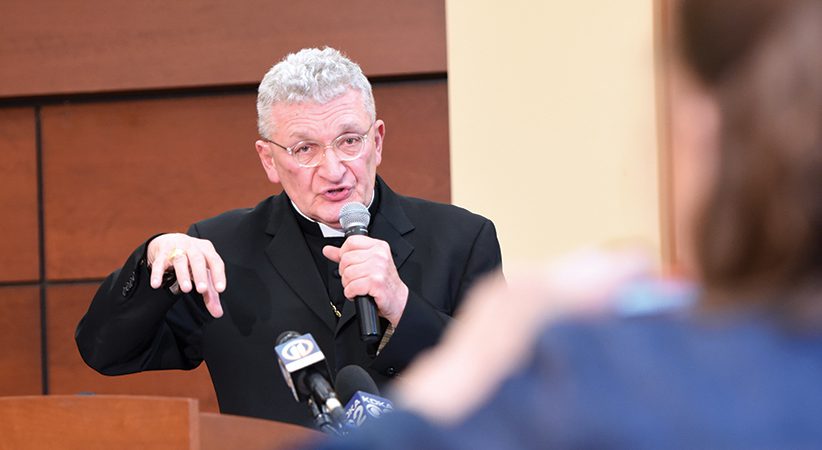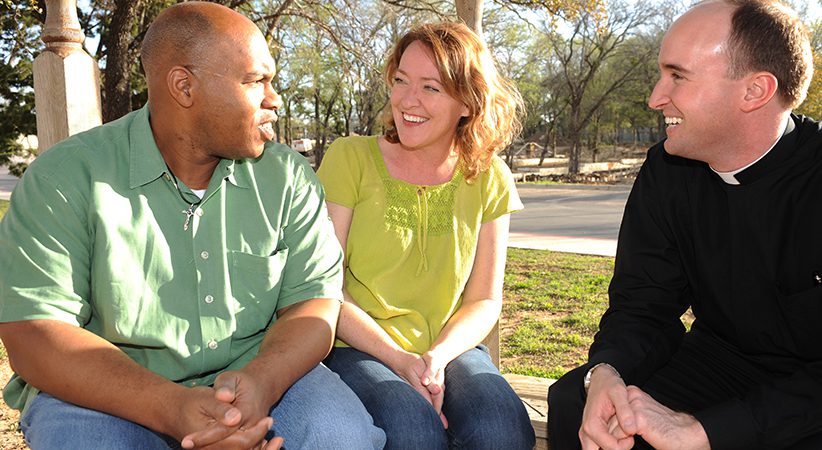A Lay Patron Saint for Priests
Blessed Pier Giorgio Frassati’s example will endure and inspire many, including the ordained
Msgr. Steven J. Aguggia Comments Off on A Lay Patron Saint for Priests
What could the life and example of a layman, born at the start of the 20th century, have to say to a priest of the 21st century? It might at first seem that there is little to connect the experiences of a young man born before World War I into a rich and influential family in northern Italy and a priest who ministers in a post-Vatican Il Church, addressing problems that scarcely existed in the previous century. Yet, it is safe to say that the example of Blessed Pier Giorgio Frassati is one that will endure and inspire many, including the ordained.
His Life
Pier Giorgio Frassati was born April 6, 1901, Holy Saturday, into a wealthy and important family in Turin, Italy. His father was the founder of the newspaper La Stampa and was a senator and ambassador. His mother was a gifted artist. Pier Giorgio was born into a privileged life that included growing up in the rich and ever-growing industrialized city of Turin with holidays spent at the family’s home in the town of Pollone in the mountains.
| Beatification Remarks |
|---|
|
“By his example he proclaims that a life lived
in Christ’s Spirit, the Spirit of the Beatitudes,
is ‘blessed,’ and that only the person who
becomes a ‘man or woman of the Beatitudes’
can succeed in communicating love and peace
to others.”
— Pope John Paul II’s homily at the beatification
Mass of Blessed Pier Giorgio Frassati, May 20, 1990
|
From the start, Pier Giorgio exhibited an attraction to the things of the Church, so much so that his mother began to “fear” that he would want to become a priest. His childhood centered on his life at school and his friends. He had to push himself to achieve in school and especially enjoyed spending time with the friends whom he loved. Anyone who encountered this normal young man, though, immediately sensed something different about him. He radiated a kind of joy that can only come from a heart filled with faith. It is the kind of joy that all Christians are called to display, a joy in living life as a gift of God. This joy attracted many. He fell in love with a girl named Laura but ended the relationship since his family did not approve.
Pier Giorgio involved himself in helping the sick and the poor, who were abundant in the growing industrialized city. Often these people were hopelessly lost without the social services that would become a part of society’s fabric later on. Pier Giorgio spent his time in the city’s slums, helping people with food, money and medicine. He became to many a sort of guardian angel. He was an active and outspoken member of the St. Vincent de Paul Society but did not limit his assistance just to the institutional variety. He was often personally involved in the lives of many poor and sick people.
Additionally, he was a man of prayer. His frequent outings into the mountains that he loved so much, and which surrounded the family’s home in the country, always began with Mass. If it were impossible to get to a church, Pier Giorgio often convinced one of his priest friends to come along on the excursions, thus assuring the celebration. Nights were frequently spent in adoration of the Blessed Sacrament, and pilgrimages were often on foot to his beloved Alpine Shrine of the Black Virgin of Oropa.
Politically aware and active, Pier Giorgio labored to keep a Christian presence in a tumultuous Italian political scene that often included anti-clerical and anti-Church attitudes. His actions were part of his well-rounded approach to the Christian life, which included personal and public manifestations of his deeply rooted faith. Little of this was understood, tolerated or even known by his family, who expected something very different from their only son.
Pier Giorgio died at 24. He had contracted poliomyelitis, probably from one of the people he had been helping to care for. After just four days of suffering, he was dead.
He was true to his selfless nature to the end; the family barely realized the extent of his final suffering since his grandmother had died that very week and Pier Giorgio did not wish to draw the attention of the family away from that.
In 1990, Pier Giorgio was declared “Blessed” by Pope John Paul II and called “the man of the beatitudes” because of an exemplary Christian life.
His Example
Can this man of the last century be a model for a priest of this century? In many ways, Pier Giorgio was a forerunner of the teachings of the Second Vatican Council. He was an active layman who understood well that all people are called to holiness in the Body of Christ, a man who lived the call of his baptism and became an evangelizer, bringing the Word of God to the world, to “worlds” where the ordained of his time often did not venture.
Obviously, his life is a fine example and model for the laity. He was what the fathers of Vatican II envisioned when they conceived of an active laity answering a universal call to holiness. Pier Giorgio never doubted that he was called to the same holiness of life that priests and religious were called to, and he never stopped to think that maybe he should have left the care of the poor and the sick to “professionals.” His life, though, is an inspiration to us “professionals.” Pier Giorgio could teach us about the Church as the Body of Christ, about prayer and the apostolate and about suffering.
People today have a better understanding of the universal vocation to holiness given in baptism. A priest would do well to understand and appreciate all the workers God has sent. These are workers of every sort, from every state in life. These are young workers and old workers, consecrated workers and lay workers. They are workers who are living out their baptismal vocation, a vocation to which all who bear the name “Christian” are called.
A healthy collaboration between clergy and laity is a healthy way for the Church to grow; it is not, nor can it be, seen as simply something we have to resort to because of a shortage of ordained clergy. It is recognition of the fact of a common baptism and a common call to serve the Body of Christ.
All this was realized by Pier Giorgio Frassati a half-century before these ideas came to the fore. Prayer is often the first part of a priest’s busy day to be put aside. We live lives of service and sometimes fail to render unto God the things that are God’s. Pier Giorgio’s service of the sick and poor was an extension of his prayer. His hours before the Blessed Sacrament and his countless Rosaries were not just “parts” of his day, separate from his active apostolate, but rather they were interconnected. Even his political activism was an extension of his beliefs and the fruit of his prayer life.
Too often we separate parts of our life. We take our week of retreat and perhaps the occasional day of recollection. We recite our office and think we have prayed. And we have indeed prayed, but has the active apostolate we pursue taken on a life of its own, unfed by the fountain of grace that prayer offers?
A priest would do well to see Pier Giorgio’s selflessness as a model for living the Christian life in the way a priest is called to live it. A priest’s life is, by definition, to be a life of service. We are all, priests and laity, “other Christs.” Priests are configured through the Sacrament of Holy Orders to Christ the Head of the Church. We strive to serve others in whom we see Christ present. How inspiring is this kind of service in the life of someone who did not have to serve except in that he wanted to imitate his Master who came to serve and not to be served.
Pier Giorgio suffered in his short life, a physical suffering that not many of us will have to endure, though some do. Not wishing to burden others, Pier Giorgio suffered in relative silence, thinking not of himself but rather of his family and friends and even the poor. The last thing he wrote was a reminder note to get medicine for a poor friend he had been visiting. Did he see, in those last difficult days, a connection not only with the suffering Jesus whom he loved but also with the Jesus suffering in the people around him? His poor and sick? Even his own grieving family?
A priest has a unique and privileged opportunity to enter into the sufferings of so many. But how to explain it to people? How to help shoulder their crosses? Only with the Christian understanding of suffering, something that has been part of the life and spirituality of so many of the saints of our history, can we even begin to enter peoples’ lives with compassion and understanding. Only then can we become the Simon of Cyrene that the people of God need. Maybe, too, in fraternal charity, we can reach out and become Simons to our brother priests who often struggle in pain in ways that only other priests understand all too well.
MSGR. STEVEN J. AGUGGIA is a priest of the Diocese of Brooklyn and serves as judicial vicar in the diocese.
……………………………………………………………………………………………………………………………………………….
The Legacy of Blessed Pier Giorgio Frassati
A lay saint as an example for a priest? Blessed Pier Giorgio Frassati was a man who lived out the Christian life as a lay member of the People of God and whose life is an example for all. Yet his dedication to serving the Body of Christ and his keen and prophetic understanding of the universal call to holiness, his profound life of prayer and his attitude in the face of pain can all provide a powerful model for priests in the 21st century.
Not since the early days of Christianity have the challenges of evangelization been so clear and yet so daunting. The Church and the New Evangelization depends on all the members of the Body of Christ working in harmony and with a clear sense of mission. Within this, the ordained take their place as shepherds of the flock and leaders of the People of God.
The example and the prayers of this friend of priests, a man truly ahead of his time, are ours.
……………………………………………………………………………………………………………………………………………….





